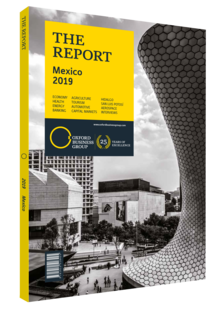Fernando Romero, CEO, FR-EE: Interview

Interview: Fernando Romero
How would you describe the outlook for the real estate and construction sectors, and what projects to you see contributing to Mexico’s development?
FERNANDO ROMERO: Since the cancellation of the new Mexico City airport and the subsequent measures taken by the local government, the construction and real estate sector has been experiencing a phase of uncertainty. In addition to this, current trade tensions between China and the US – and the consequent global economic instability – are having an impact on investor confidence. As a result, many projects have remained on hold. However, we believe this situation is going to change soon, and that local and federal governments will start promoting and incentivising new developments.
Nevertheless, Mexico is facing challenges both with finishing infrastructure projects that were planned during the previous administration, as well as moving forward with projects prioritised by the current government, such as the Mayan Train and the Trans-Isthmus railway projects. One of the most promising features of the Trans-Isthmus railway project over the next 15 years will be the development of a hyperloop network, which will transport people and cargo across the country and to the US with the support of electromagnetic power. It is the most efficient transport system in the world, and it holds the potential to significantly boost connectivity between Mexico’s most important industrial and commercial corridors, US border cities, the Gulf of Mexico and the Pacific coast. This would allow Mexico to compete on equal terms with the Panama Canal.
In what ways are the latest social and economic policy trends affecting future sector growth?
ROMERO: With regard to trade, transport infrastructure between the US and Mexico needs to be updated. Most of the 35 border points we share were built over 30 years ago. Connectivity to the US is of significant importance to the Mexican economy, not only for the transportation of cargo and goods, but also for those who regularly commute across the border for work. Improving border infrastructure will provide a number of opportunities for growth in the construction sector.
We also believe it is crucial for the future of our country to consolidate trade relations with the ratification of the US-Mexico-Canada trade agreement. We have to acknowledge this mandate is driven by a social agenda, hence innovative and state-of-the-art infrastructure projects have been set aside for time being. Considering that this is a cycle, construction, infrastructure and real estate companies should provide solutions for the issues the government intends to tackle. In this regard, the residential segment – particularly affordable housing – will offer many opportunities for the local market. The challenge will be to reverse the current trend of building inefficient, low-quality housing, and instead construct sustainable, high-quality affordable homes for working families. This will boost the quality of life for the most disadvantaged citizens, as well as bring many business opportunities to construction companies, create jobs and contribute to the multiplier effect for the benefit of the broader economy.
What is being done to integrate new technologies and sustainable practices in the sector?
ROMERO: The use of efficiency and sustainability technology was developed to some extent in Mexico, but there is still a lot to do in the future in order to fully benefit from these technologies in the construction sector. Nevertheless, the government should take the lead in better integrating a sustainability agenda in large-scale infrastructure projects that are funded or promoted by federal and local administrations. If the government and the private sector can work together towards common goals, this will provide a number of opportunities. In terms of specific industry technologies, building information modelling will be key in making infrastructure projects more efficient and helping construction companies tackle climate change.
You have reached the limit of premium articles you can view for free.
Choose from the options below to purchase print or digital editions of our Reports. You can also purchase a website subscription giving you unlimited access to all of our Reports online for 12 months.
If you have already purchased this Report or have a website subscription, please login to continue.

